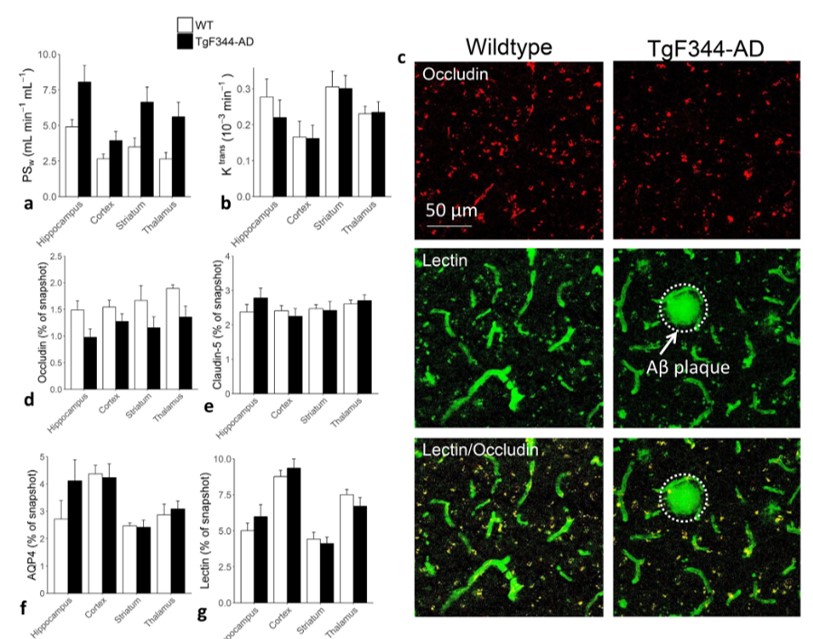
Water-exchange MRI detects subtle blood-brain barrier breakdown in Alzheimer’s disease rats.
B.R. Dickie, M. Vandesquille, J. Ulloa, H. Boutin, L.M. Parkes, G.J.M. Parker. Water-exchange MRI detects subtle blood-brain barrier breakdown in Alzheimer’s disease rats. Neuroimage. (2019);184:349-358.
Blood-brain barrier (BBB) breakdown has been hypothesized to play a key role in the onset and progression of Alzheimer’s disease (AD). However, the question of whether AD itself contributes to loss of BBB integrity is still uncertain, as many in-vivo studies have failed to detect signs of AD-related BBB breakdown. We hypothesize AD-related BBB damage is subtle, and that these negative results arise from a lack of measurement sensitivity. With the aim of developing a more sensitive measure of BBB breakdown, we have designed a novel MRI scanning protocol to quantify the trans-BBB exchange of endogenous water. Using this method, we detect increased BBB water permeability in a rat model of AD that is associated with reduced expression of the tight junction protein occludin. BBB permeability to MRI contrast agent, assessed using dynamic contrast-enhanced (DCE)-MRI, did not differ between transgenic and wild-type animals and was uncorrelated with occludin expression. Our data supports the occurrence of AD-related BBB breakdown, and indicates that such BBB pathology is subtle and may be undetectable using existing ‘tracer leakage’ methods. Our validated water-exchange MRI method provides a new powerful tool with which to study BBB damage in-vivo.
Read the full article here.






0 Comments